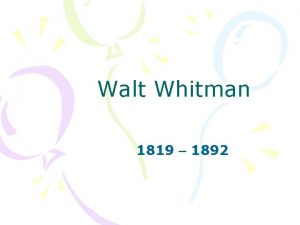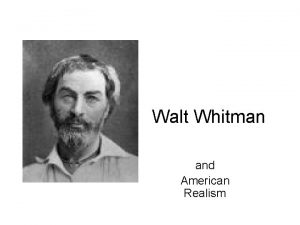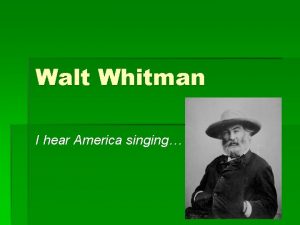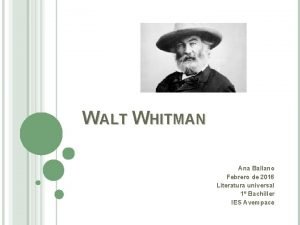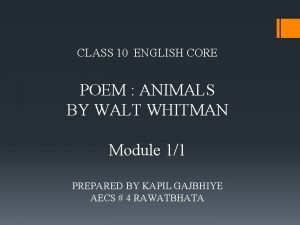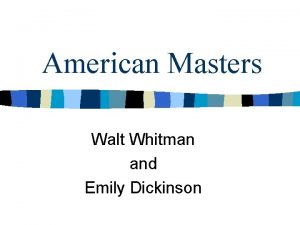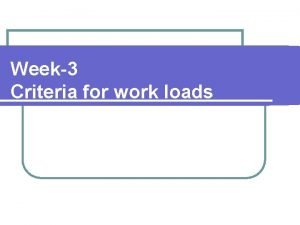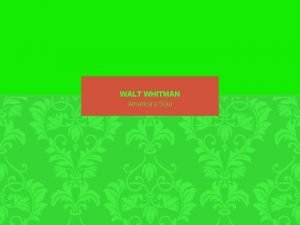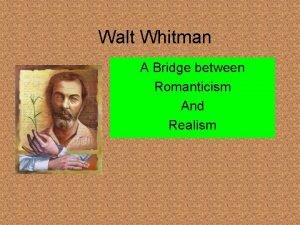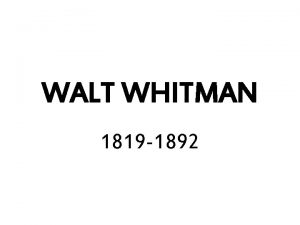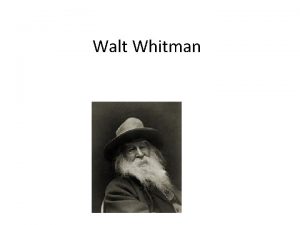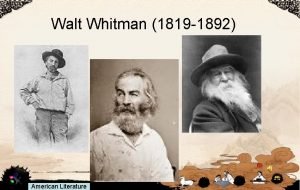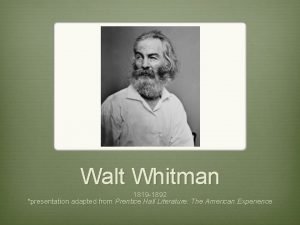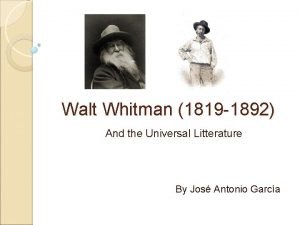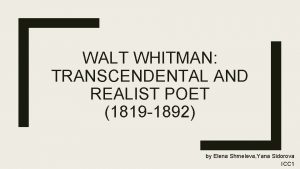Walt Whitman 1819 1892 He was a printer






![[in Just-] By E. E. Cummings in Justspring when the world is mudluscious the [in Just-] By E. E. Cummings in Justspring when the world is mudluscious the](https://slidetodoc.com/presentation_image/1df5e76abe985d8abec8684fde36260f/image-7.jpg)

- Slides: 8

Walt Whitman

• 1819 -1892 • He was a printer, carpenter, teacher, newspaper reporter, and he nursed his brother and other soldiers during the Civil War • 1855 - published the first edition of Leaves of Grass

Leaves of Grass • Started off as 12 vey long poems. No publisher wanted to published – Did not follow the “rules” of poetry at the time • Once published once- he revised and published nine new editions • Whitman is now considered as the Father of American Poetry

Edward Estlin Cummings • 1894 -1962 • Went to Harvard, then afterwards split his time between Boston, NYC, and Paris. • After his travels, he began to write and eventually started experimenting with punctuation. • Published his first collection of poetry in the 1920 s, it stood out because his unusual use of punctuation, capitalization, and word spacing.

Miracles - Poem by Walt Whitman PAGE 620 WHY! who makes much of a miracle? As to me, I know of nothing else but miracles, Whether I walk the streets of Manhattan, Or dart my sight over the roofs of houses toward the sky, Or wade with naked feet along the beach, just in the edge of the water, Or stand under trees in the woods, Or talk by day with any one I love--or sleep in the bed at night with any one I love, Or sit at table at dinner with my mother, Or look at strangers opposite me riding in the car, Or watch honey-bees busy around the hive, of a summer forenoon, 10 Or animals feeding in the fields, Or birds--or the wonderfulness of insects in the air, Or the wonderfulness of the sun-down--or of stars shining so quiet and bright, Or the exquisite, delicate, thin curve of the new moon in spring; Or whether I go among those I like best, and that like me best-mechanics, boatmen, farmers, Or among the savans--or to the soiree--or to the opera, Or stand a long while looking at the movements of machinery, Or behold children at their sports, Or the admirable sight of the perfect old man, or the perfect old woman, Or the sick in hospitals, or the dead carried to burial, 20 Or my own eyes and figure in the glass; These, with the rest, one and all, are to me miracles, The whole referring--yet each distinct, and in its place. To me, every hour of the light and dark is a miracle, Every cubic inch of space is a miracle, Every square yard of the surface of the earth is spread with the same, Every foot of the interior swarms with the same; Every spear of grass--the frames, limbs, organs, of men and women, and all that concerns them, All these to me are unspeakably perfect miracles. To me the sea is a continual miracle; 30 The fishes that swim--the rocks--the motion of the waves--the ships, with men in them, What stranger miracles are there?

1. List five places mentioned in the poem. 2. Why is the sea a “continual miracle”? 3. Name four events that Whitman calls miracles. 4. How does your definition of “miracle” compare with the speaker’s definition? 5. Complete senses chart
![in Just By E E Cummings in Justspring when the world is mudluscious the [in Just-] By E. E. Cummings in Justspring when the world is mudluscious the](https://slidetodoc.com/presentation_image/1df5e76abe985d8abec8684fde36260f/image-7.jpg)
[in Just-] By E. E. Cummings in Justspring when the world is mudluscious the little lame balloonman whistles far and wee and eddieandbill come running from marbles and piracies and it's spring when the world is puddle-wonderful the queer old balloonman whistles far and wee and bettyandisbel come dancing from hop-scotch and jump-rope and it's spring and the goat-footed balloon. Man whistles far and wee

1. What scene does the poem describe? 2. What might the speaker mean by “just spring” an dby calling the world “mudluscious” and “puddle-wonderful”? 3. Complete senses chart
